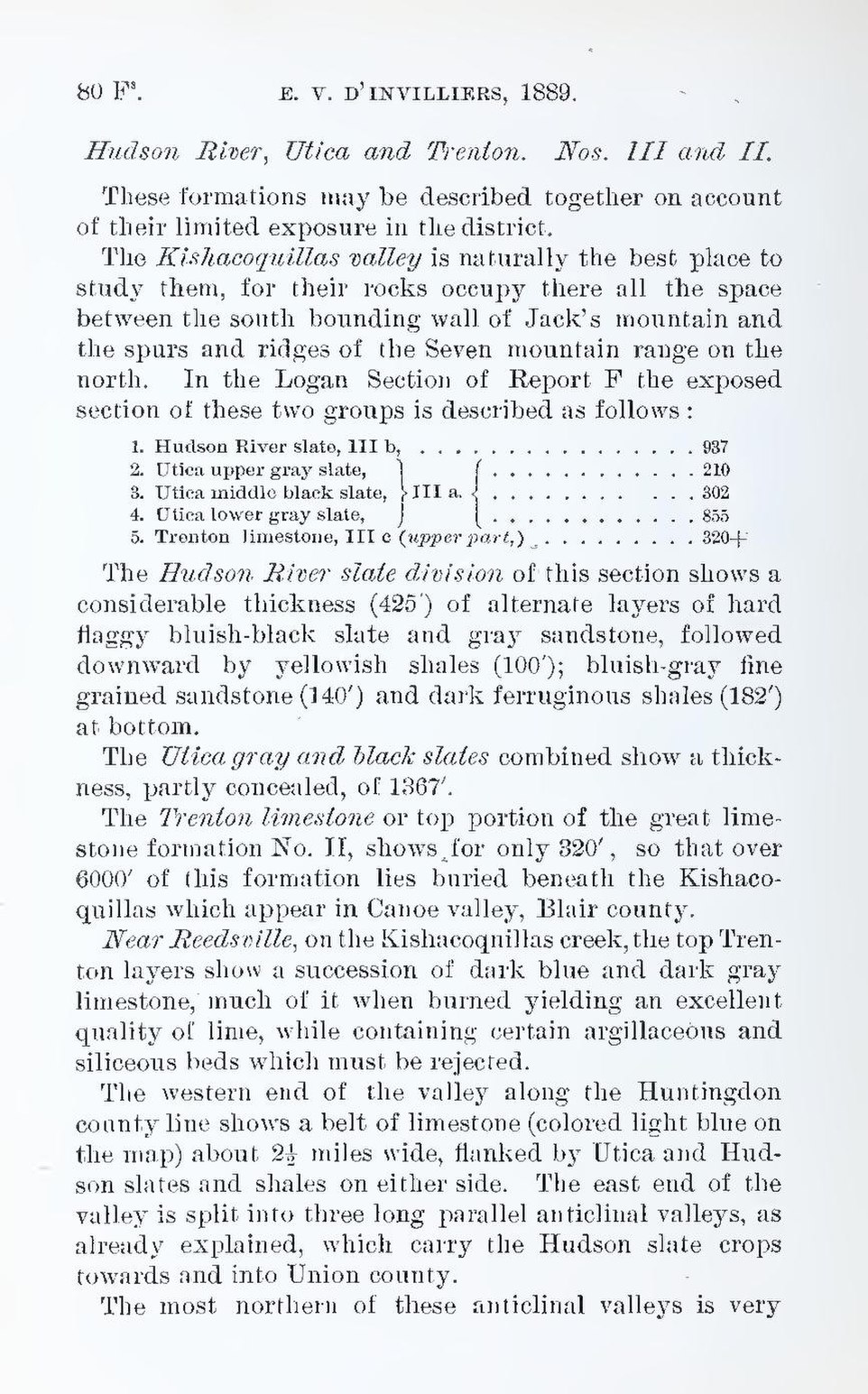Hudson River, Utica and Trenton.Nos. III and II.
These formations may be described together on account of their limited exposure in the district.
The Kishacoquillas valley is naturally the best place to study them, for their rocks occupy there all the space between the south bounding wall of Jack’s mountain and the spurs and ridges of the Seven mountain range on the north. In the Logan Section of Report F the exposed section of these two groups is described as follows:
| 1. Hudson River slate, | 937 | |||
| 2. Utica upper gray slate, | III a. | 210 | ||
| 3. Utica middle black slate, | 302 | |||
| 4. Utica lower gray slate, | 855 | |||
| 5. Trenton limestone, III c (upper part,) | 320+ | |||
The Hudson River slate division of this section shows a considerable thickness (425′) of alternate layers of hard flaggy bluish-black slate and gray sandstone, followed downward by yellowish shales (100′); bluish-gray fine grained sandstone (140′) and dark ferruginous shales (182′) at bottom.
The Utica gray and black slates combined show a thickness, partly concealed, of 1367′.
The Trenton limestone or top portion of the great limestone formation No. II, shows for only 320′, so that over 6000'′ of this formation lies buried beneath the Kishacoquillas which appear in Canoe valley, Blair county.
Near Reedsville, on the Kishacoquillas creek, the top Trenton layers show a succession of dark blue and dark gray limestone, much of it when burned yielding an excellent quality of lime, while containing certain argillaceous and siliceous beds which must be rejected.
The western end of the valley along the Huntingdon county line shows a belt of limestone (colored light blue on the map) about 2½ miles wide, flanked by Utica and Hudson slates and shales on either side. The east end of the valley is split into three long parallel anticlinal valleys, as already explained, which carry the Hudson slate crops towards and into Union county.
The most northern of these anticlinal valleys is very


